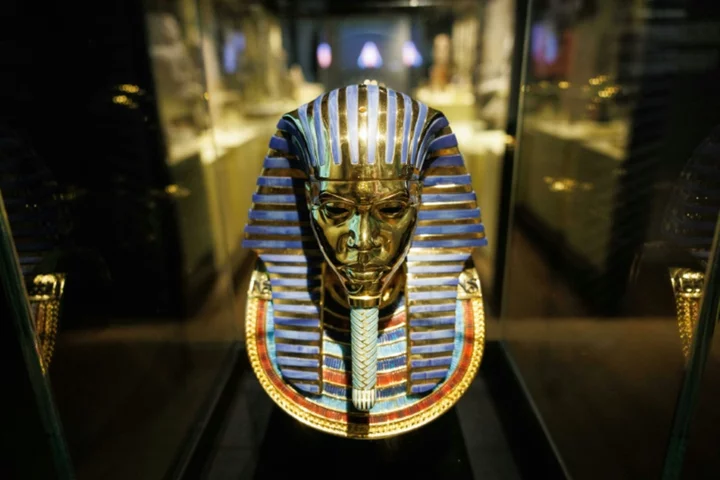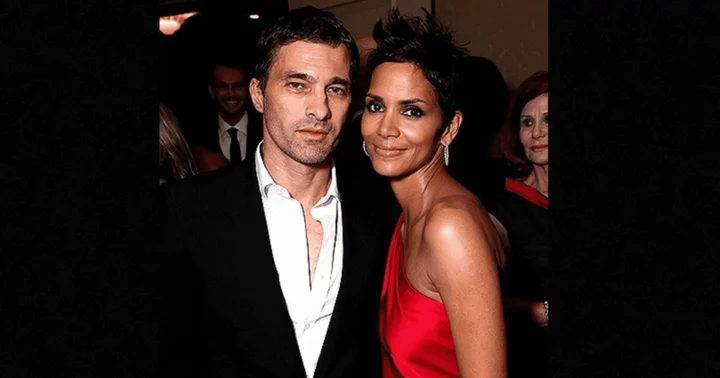In a Dutch museum the sound of hip-hop blares out next to sarcophagi and statues, in what curators say is an attempt to show the influence of ancient Egypt on black musicians.
A photo of superstar Beyonce dressed as Queen Nefertiti sits next to ancient busts, while a video of Rihanna channels Egyptian styles.
What appears to be a pharaoh's golden mask turns out to be a modern sculpture based on the cover of an album by the rapper Nas.
But the "Kemet" exhibition at Leiden's Rijksmuseum van Oudheden (National Museum of Antiquities) has enraged Egypt, which has reportedly banned the museum's archaeologists from a dig at a key site.
Egypt's antiquities service said the museum is "falsifying history" with its "Afrocentric" approach, which seeks to appropriate Egyptian culture, Dutch media reported.
The museum said it had meanwhile been hit with comments on social media that were "racist or offensive in nature" after the row blew up in Egypt.
And so what was meant to be an empowering celebration of "Egypt in hip-hop, jazz, soul and funk" has instead become a culture war.
- 'Nothing shocking' -
With a small handful of visitors inspecting the exhibits on a quiet weekday morning, the canalside museum in a Dutch university town doesn't exactly look like a battlefield.
There are walls of album covers showing the influence of ancient Egypt by artists including Tina Turner, Earth Wind and Fire and Miles Davis, and a special interactive video installation.
One visitor said the reaction to the "informative" exhibition was overblown.
"This doesn't make any sense to me and they're just sort of being too sensitive or trying to score political points maybe... Nothing to me was shocking," said Daniel Voshart, 37, a filmmaker and artist from Canada.
"There were music videos that were already made and it's not like the Dutch government paid Beyonce to become you know, Egyptian."
Museum director Wim Weijland was quoted by the Dutch newspaper NRC as saying that Egypt's reaction was "unseemly".
The museum declined to comment on the dispute when contacted by AFP, instead pointing to a special section on its website.
The museum said there had been a "commotion about this exhibition, because it shows Egyptian culture through the eyes of artists with African roots."
The exhibition had two aims, it added -- to "show and understand the depiction of ancient Egypt and the messages in music by black artists" and to "show what scientific, Egyptological research can tell us about ancient Egypt and Nubia."
The curator of the exhibition, Daniel Soliman, is himself half Egyptian and a huge music fan, sources at the museum said.
- 'Complicated' relationship -
The Dutch exhibition, which opened in late April and runs until September, appeared to walk into a already-brewing row in Egypt over a Netflix docudrama about Cleopatra.
Egyptian pundits and officials were up in arms in April after Netflix streamed a production depicting the ancient queen as black, and insisted she had lighter skin.
The Rijksmuseum's musical showcase was subsequently hit by similar criticisms of rewriting history.
Egyptian authorities then banned the museum's archaeologists from the necropolis at Saqqara, south of Cairo, NRC said.
Staff at the museum were shocked as they have been active for nearly five decades at the vast burial site, a UNESCO World Heritage site, and are currently leading an excavation there.
"It's not just a story about whether the museum is getting the Egyptian identity right or wrong," Ali Hamdan, an assistant professor at the University of Amsterdam specialising in political geography, told AFP.
"This is a story about two different projects to make sense of Ancient Egypt. One is a... cultural project by this museum, and another is a political project by the Egyptian state."
Hamdan added that "your average Egyptian would describe themselves as Arab first maybe Egyptian second", while their relationship with Africa was "complicated".
Egyptian Tourism and Antquities authorities could not be reached for comment.
dk-jcp/jhe/giv









